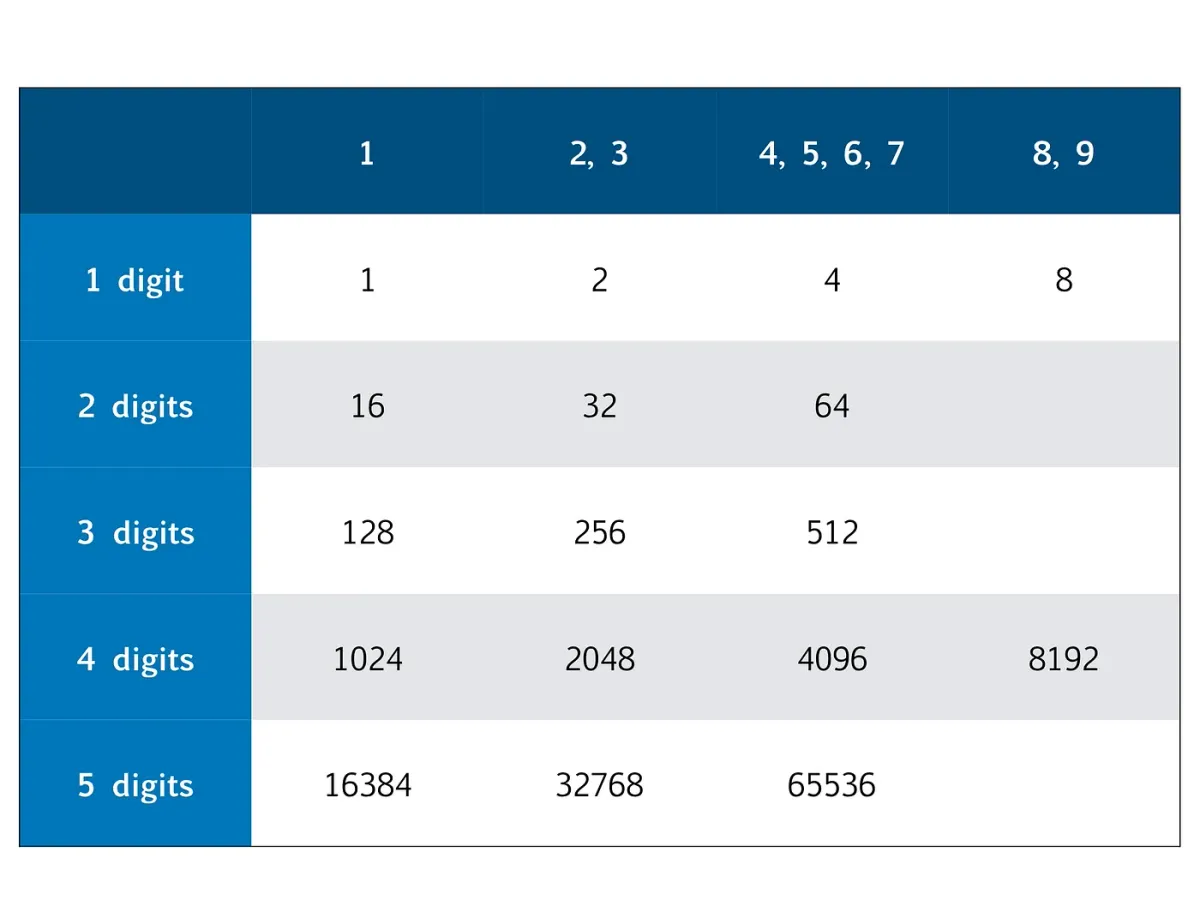An Intuitive Explanation of Benford’s Law
A simpler way of visualising and observing Benford’s Law through the powers of two

A few days ago, I explained the content of my previous article on Benford’s Law to a friend, who’s one of the few people who would humor my enthusiasm with maths. And, being the brilliant person she is, she asked how we might observe Benford’s Law and see it in action. It’s one thing to create charts and python programs that show the correlation, but it’s another thing entirely to see how the pattern unfolds and why it behaves that way.
Taking the challenge, I set about creating a more concrete way to illustrate Benford’s Law, particularly for the powers of two. And this is exactly what I hope to provide right now.
Benford’s Law tells us that there are generally more numbers with a leading digit of 1 than 2, 2, than 3, 3, than 4 and so on, with 9 having the least.
Now, let’s see how this works with the powers of two.
If we observe the powers of two with a leading digit of 1:
1, 2, 4, 8, 16, 32, 64, 128, 256, 512, 1024, 2048, 4096, 8192, 16384
We can see that they separate the powers of two by the number of digits they have
One digit: 1, 2, 4, 8
Two digits: 16, 32, 64
Three digits: 128, 256, 512
…
In other words, every order of magnitude in the powers of two has exactly one number with a leading digit of one. And since each order of magnitude has 3 or 4 numbers, we can expect 25% to 33% of powers of two to have a leading digit of 1 (and Benford’s 30.1% incidentally falls in this range).
And that’s not all.
What if we arrange the powers of two into a table like this…

…where each row is an order of magnitude and each column is a power of two in that order of magnitude. From this, I noted that the first three columns can never be empty, as even a number with leading digits 19 (the greatest possible if it is to have a leading digit of 1) cannot cross to the next order of magnitude with only 2 steps (19 x 2 x 2 is just 76).
Let’s consider just the first three columns for now. If we choose a number from them, we can see that there is an equal probability of choosing a number from each column. However, we cannot say the same for each number.
Although the probability of choosing each column is about 33%, 1 has the entire column to itself (i.e. the entire 33%). 2 and 3 have to share their column. While 4, 5, 6, and 7 take even smaller portions from the 33% pie.
If we were to extend the table to accommodate more rows, however, we would actually see that 2 and 3 don’t get equal portions of the probability pie, nor do 4, 5, 6, and 7.
In the long run, there are actually more leading digits of 2 than 3 in the second column. Why? Well, the second leading digit seems to favor smaller numbers, too. Hence, there’s a lesser chance of the first leading digit “carrying one.” This just means that numbers in the first column more frequently fall in the range 10–14 (which would have a leading digit of 2 when multiplied by 2) than in 15–19 (which would beget a leading digit of 3).
The same thing applies to the third column as well. Since there are more numbers with a leading digit of 2, as previously established, there’s a higher chance of the next power of two to have a leading digit of 4 or 5 as opposed to 6 and 7. And again, given that the second leading digit also tends to favor smaller numbers, 4 is more prevalent than 5, and 6 more so than 7.

But of course, we cannot leave out the fourth column in the aforementioned table.
It’s obvious that, unlike the first three columns, the fourth is occasionally left blank in certain cells. Which is why, although there are only 2 numbers (8 and 9) to share in the probability pie, rarely do they even get a share in the first place. This is primarily because in the previous column of leading digits 4, 5, 6, and 7, only with a leading digit of 4 will the fourth column not be skipped (5, 6, and 7 will result in a leading digit of 1).
In summary, within an order of magnitude, multiplying by two increases the variance of leading digits. Going back to the table the first column is guaranteed to always have a leading digit of 1, the second has a choice between 2 or 3, the third has 4 choices (5, 6, and 7), and there is no guarantee that there will even be a number with a leading digit of 8 or 9 in the fourth column. Hence smaller leading digits like 1 are more prevalent.
What I Have Learned
Going through this explanation has definitely taught me a lot. But as a whole, it has showed me that intuitive explanations, albeit not as formal or rigorous, can lead to a more profound understanding of a mathematical phenomenon. And of course, all it takes is the right question to spark that idea.





